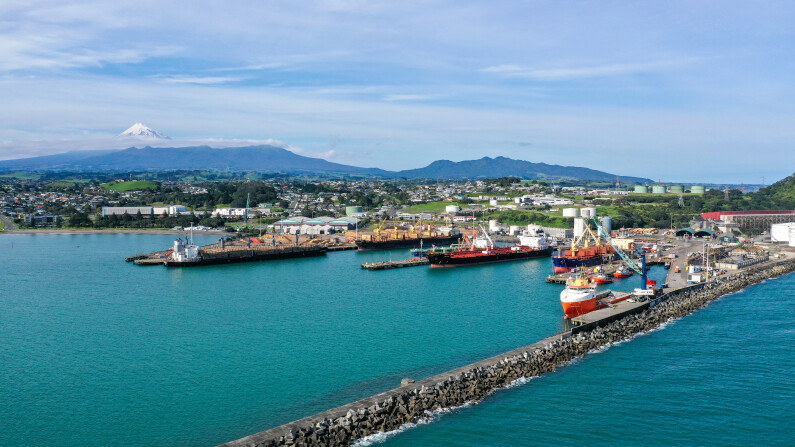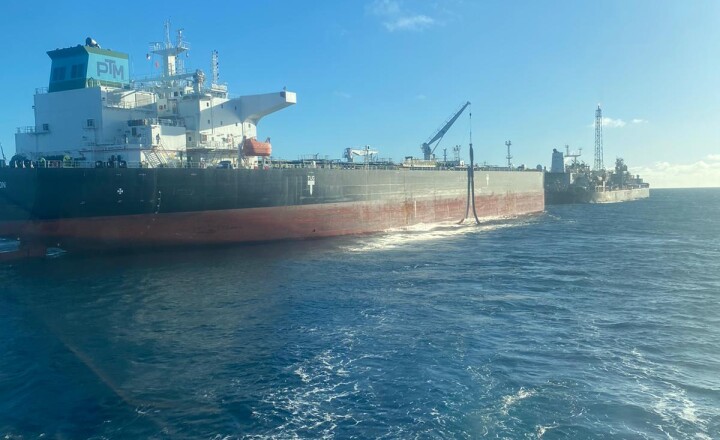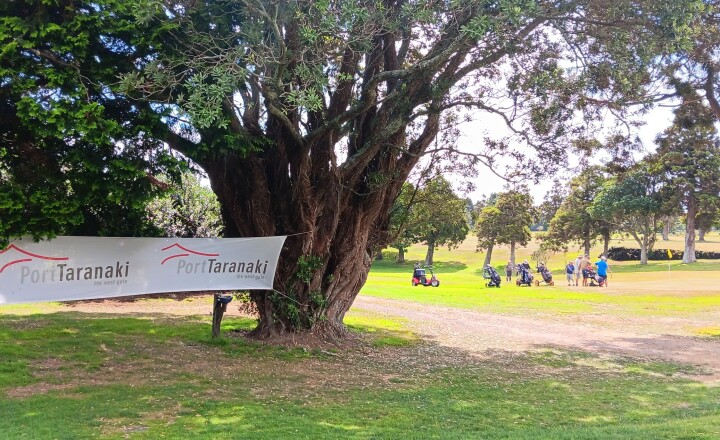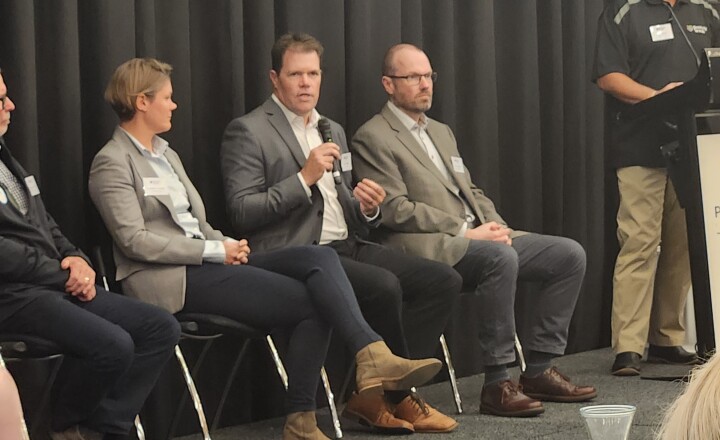
Increased costs and reduced trade volumes have combined to impact Port Taranaki’s financial result for the first half of the 2023-24 year.
For the six months to 31 December 2023, Port Taranaki recorded a net profit after tax of $4.26 million. This was down on the $6.53 million recorded for the corresponding six months in 2022, although that result benefited from some extraordinary non-trade revenue, including an insurance payout related to Cyclone Dovi.
For the 2023-24 half-year, total operating expenditure was up $3.26m, or 17.2%, from $18.96m to $22.22m, while total trade volume was down 170,000 tonnes, or 7.7%, from 2.22m tonnes to 2.05m tonnes.
“It has been a challenging first six months of the year as inflation-driven costs impact our business and the business of our customers, while at the same time trade has reduced because of a range of reasons, including production and market conditions,” Port Taranaki chief executive Simon Craddock said.
While total revenue for the half-year of $27.43m was only marginally down on the $27.74m of the previous year, the increase in total operating expenditure impacted the overall result.
“Insurance costs were up because of an increase in asset values and a general increase in the cost of insurance, maintenance dredging costs were up, personnel costs rose, depreciation increased following the completion of our $16 million firewater system, and finance and professional services costs were up,” Mr Craddock said.
“All these significant cost increases are pushing us to look closely at our business and make adjustments to reduce costs. We’re not alone, with every business dealing with inflation-driven cost increases.”
With total trade volumes down, there were 15 fewer vessel visits for the period – 126 compared with 141 for the first six months of the 2022-23 year.
Log trade, at 459,000 JAS (Japanese Agricultural Standard tonnes), was down 67,000 JAS, or 12.7%, from the 526,000 JAS recorded the corresponding half-year. This was the lowest recorded in the past four years, as reduced demand from China resulted in low commodity prices, and wet weather hampered harvesting and the volumes available to export.
Liquid bulk trade was down 24,000 tonnes, or 2.0%, from 1.22m to 1.19m.
“The gas market is constrained and is affecting everyone in our region in some way. We are seeing it in reduced offshore activity and in reduced volumes moving across the port. While upstream investment has been made by gas suppliers, gas production has been lower than expected,” Mr Craddock said.
At 362,000 tonnes, dry bulk trade was down 68,000 tonnes, or 15.8%, on the same period the previous year, on the back of a lower projected dairy payout and on-farm cost pressures.
Port Taranaki is owned by the community through the Taranaki Regional Council (TRC), and dividends paid to the council go towards offsetting regional rates. A final dividend of $4.50m for the 2022-23 financial year was paid to the TRC in October. An interim dividend of $3.50m has been approved for the 2023-24 financial year.
“Our mission is to make trade easy for our customers, which is incredibly important during these tougher times. We’re constantly looking at ways to serve our customers better – understanding their challenges and their needs, being responsive, and providing services where we can be competitive,” Mr Craddock said.
“Through supporting our customers we help support the community and our vision of being The Pride of Taranaki.”
Mr Craddock said key to this was providing facilities that are resilient, which gives customers confidence their assets and cargo are protected now and in the future.
“The firewater system upgrade on the Newton King Tanker Terminal (NKTT) was part of this, and during the past six months we’ve continued a programme of structural repair work to ensure the longevity of our wharves, we’ve carried out a significant project to strengthen and improve the NKTT seawall, we’ve continued to upgrade our log yard stormwater systems, and have established a new security control centre where state-of-the-art communications and security technology has been installed.”
During the period, Port Taranaki welcomed two of a record seven cruise vessels for the season, and continued to build relationships with offshore wind developers, with the view to providing key support services and infrastructure in the development of an offshore wind industry in New Zealand.
“We also continued to work with our traditional energy partners, and during the first six months we supported further decommissioning work at the Tui field and exploration work at the offshore Kupe field.
“Building long-term mutually beneficial partnerships with our community is incredibly important, including with Ngāti Te Whiti hapū, who we engage with regularly through our kaitiaki forum to discuss projects, collaborate on complex issues, and to inform resource consent applications.”
Long-standing director Richard Krogh, who joined the Port Taranaki Board of Directors in 2012 and had been chair since 2019, retired at the start of the 2023-24 financial year, and was replaced as chair by director Jeff Kendrew.
“Richard was hugely influential in the success of Port Taranaki, and we thank him for his service,” Mr Craddock said.
Mr Craddock said trading in the second half of the financial year was forecast to be at a similar level to the first half.
“Economic conditions are still mixed, and bulk liquid trade is expected to be impacted by planned maintenance outages and lower than expected output. As a result, full-year trade is projected to be below that recorded in full year 2023.”


